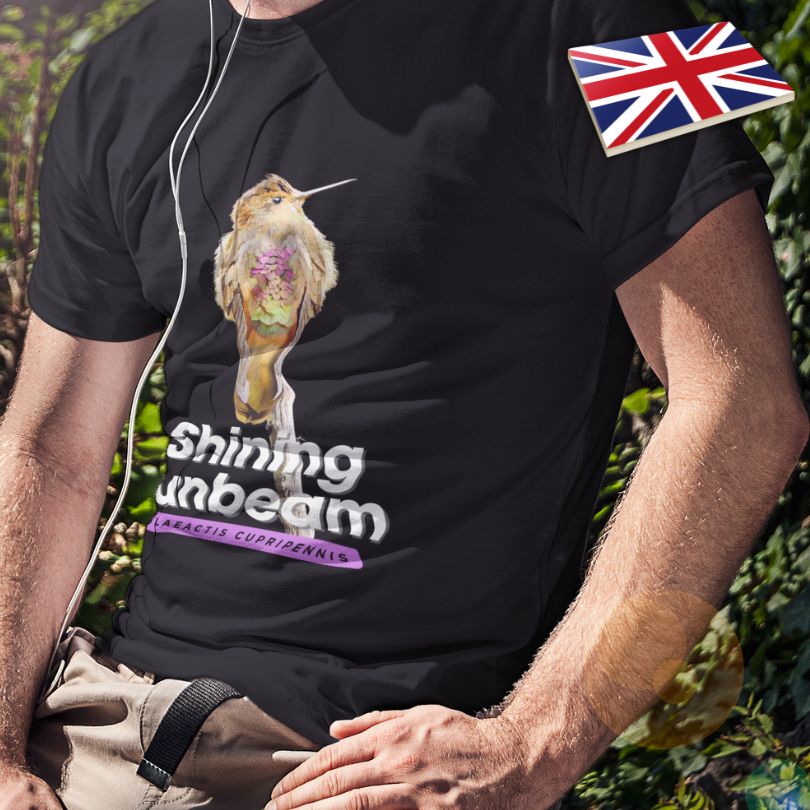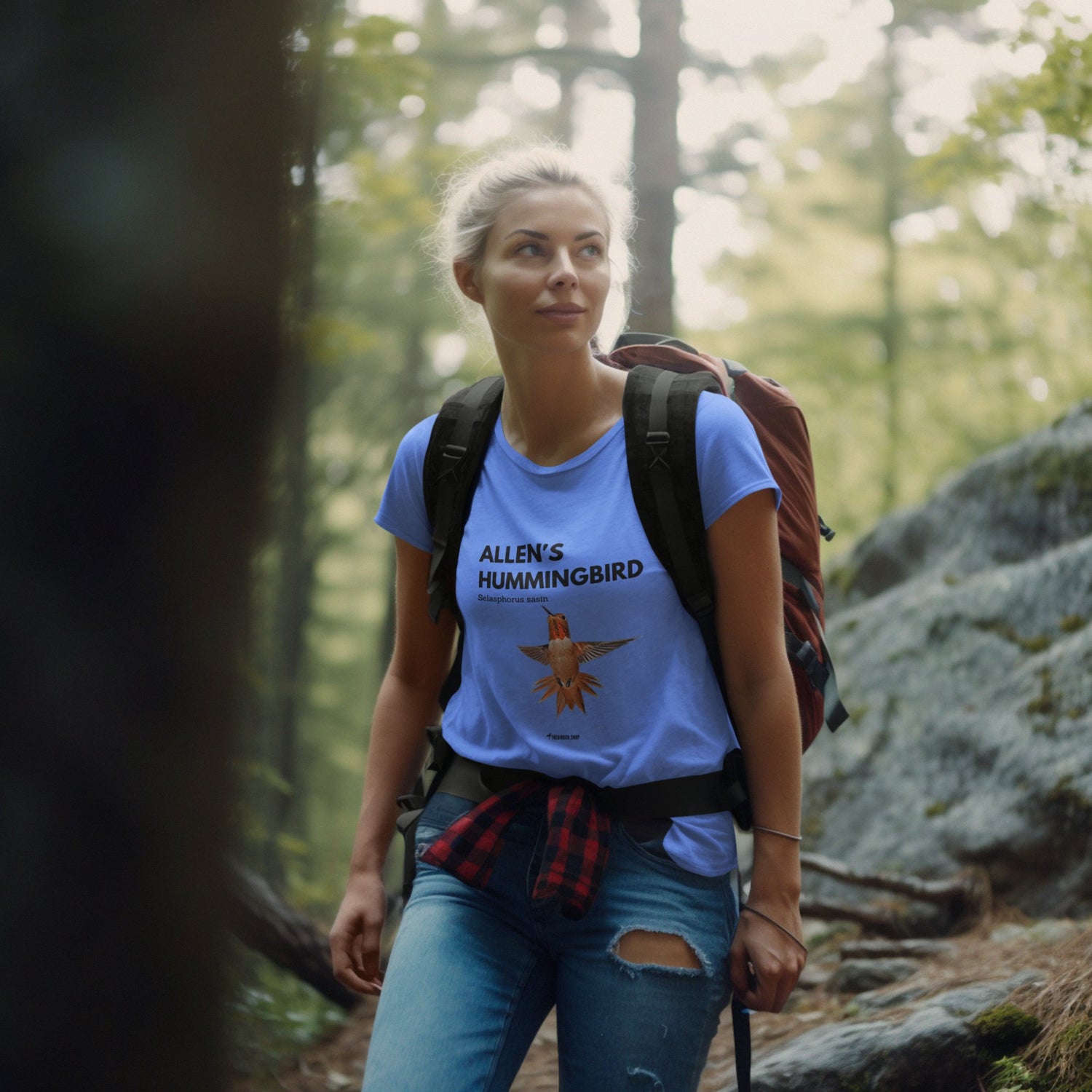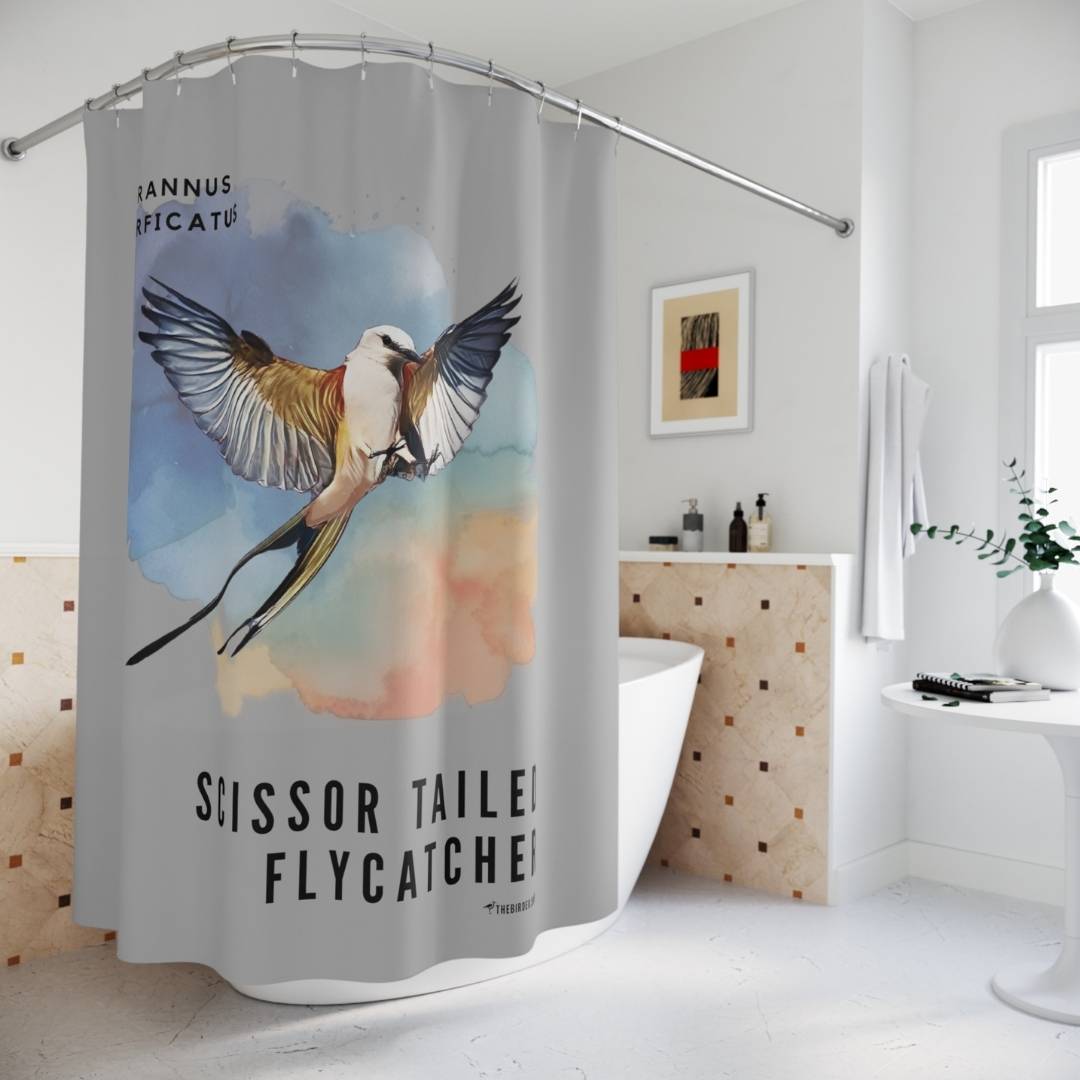Participants (USA): Eric Preston, Stephen Davies, Paul Saraceni, Kevin McKereghan, Hugh Cotter, Mark Shorten (Ireland).
Tour Leader: Juan Manuel Cardona
Tour organizer & Logistics: Julio Delgado
OVERVIEW
Our recent tour explored diverse bioregions across Colombia's geography, offering participants the opportunity to discover an impressive variety of birds, plants, amphibians, and other wildlife. This experience proved to be extremely rewarding for wildlife enthusiasts and particularly valuable for those looking to add new species to their personal lists.
The journey included visits to the Central and Western Andes, Cauca Valley, and the Pacific lowlands. This allowed us to explore lowland ecosystems such as Tropical Rainforest and Tropical Dry Forest, as well as mountain ecosystems including Subandean forest, Andean forest, High Andean forest, and Paramo habitats.

Crescent -faced Antpitta
Throughout these diverse environments, we had the privilege of observing and photographing a significant portion of the bird species native to west-central Colombia's ecosystems. The tour's success is really a team effort, from the excellent service providers including lodges, hotels, nature reserves, NGOs, local guides, to the excellent driving from Leonardo, our Van driver, Juan Manuel Superb guiding and Julio's (Piculet Birding Tours) meticulous logistic & organization. We extend our heartfelt thanks to the entire team and look forward to continuing to provide experiences that send happy clients home with thousands of new memories to share.

NOV 2- Welcoming
Our meeting point and group welcome took place on the afternoon of November 2nd at Alfonso Bonilla Aragón Airport in Cali. There, along with Stephen (who had arrived a day earlier) and Julio , we greeted three more participants (Paul, Hugh, and Kevin). Together, we headed to the city of Guadalajara de Buga and then on to the El Diamante area, where we took advantage of the day's final hour as everyone was eager to begin searching for birds.

In this location, we had the opportunity to spot several species, including Blue-necked Tanager, Bay-headed Tanager, Lesser Swallow-tailed Swift, Yellow-olive Flatbill, Yellow Warbler, Steely-vented Hummingbird, and Acadian Flycatcher, among others. To summarize, our welcome day concluded in the field, searching for birds – a perfect introduction to our adventure!
Later that evening, Julio collected our final participants (Mark and Eric) and brought them to Hotel Chrisban in Guadalajara de Buga, completing our group with whom we would formally begin our expedition the following morning.
NOV 3- Sonso Lagoon
Our tour began at the Laguna de Sonso Natural Reserve, a remarkable protected area spanning over 2,000 hectares of forests, wetlands, and associated wildlife. This crucial habitat serves as a sanctuary for both migratory and resident bird species.
We were fortunate to meet Nataly Aguilar, a charismatic local guide who warmly introduced us to the reserve. Her expertise provided invaluable insights into the reserve's operations and management by the Corporación Ambiental del Valle del Cauca (CVC). During our initial hour of exploration, we enjoyed exceptional views of several remarkable species, including Horned Screamer, Snail Kite, Fulvous Whistling-duck, Prothonotary Warbler, Guira Tanager, and Glossy Ibis.

Venturing deeper into the reserve's forested areas, we focused on finding endemic and target species. Our five-hour morning session proved incredibly productive, with highlights including our endemic discoveries of Grayish Piculet and Apical Flycatcher. The ecosystem's remarkable biodiversity allowed us to observe an impressive 90-100 species by morning's end.

Notable sightings included: Little Cuckoo, Yellow-billed Cuckoo
Lesser Nighthawk, Common Potoo, Anhinga, Pied-billed Grebe, Buff-necked Ibis, Multiple Kingfisher species (Amazon, Green, Ringed), Spot-breasted Woodpecker, Yellow-crowned Amazon, Spectacled Parrotlet, Bar-crested Antshrike, Slate-headed Tody-flycatcher, Great-crested Flycatcher (a lifer for our local guide!)

Endemic Apical Flycatcher
In the afternoon, we traveled to Cerritos in Pereira, checking into Villa Juana Hotel, conveniently located just 10 minutes from our next birding destination, the Cauquita Reserve. Our day concluded with a twilight walk around the hotel grounds, where we were delighted to spot a pair of Scarlet Macaws, several Chestnut-fronted Macaws, Thick-billed Seed-finch, Bar-crested Antshrike, Gray Seedeater, and Black-bellied Whistling-duck.
A truly exceptional first day of birding in Colombia!
NOV 4- Kaukitá Reserve
Our day began early at 5:45 AM, with an exciting journey towards the Kaukita Reserve. Our first captivating stop featured a pair of Crested Bobwhite meticulously preening under a tree - a moment that warranted numerous photographs and appreciative observations.
Continuing through grasslands and scrublands, we encountered a delightful array of species including: Ultramarine Grosbeak, Red-breasted Meadowlark, Grassland Sparrow, Wedge-tailed Grassfinch, Dwarf Cuckoo, Streak-headed Woodcreeper, Clay-colored Thrush, White-vented Plumeleteer.

At 10:00 AM, we arrived at the reserve's entrance, beginning our walk through grasslands and guadua forests. The reserve represents a transitional ecosystem in recovery, transitioning through grasslands, shrublands, and secondary forests. This tropical dry forest habitat offered an impressive diversity of species, including: Apical Flycatcher, Orange-winged Amazon, Spectacled Parrotlet, Bran-colored Flycatcher, Sulphur-bellied Flycatcher, Yellow Oriole, Guira Tanager, Large-billed Seed-Finch, Bay-breasted Warbler, Ruddy-breasted Seedeater, Ultramarine Grosbeak.



Grassland Sparrow
Our morning session concluded at noon, after which we enjoyed lunch at Castilla Plaza in Cerritos. Originally planning a stop to search for Turquoise Dacnis, unexpected rain redirected our route directly to Montezuma Lodge.

Cocoa Woodcreeper
The afternoon proved magical around the lodge's new feeding areas, where we were treated to sightings of: Golden-hooded Tanager, Red-headed Barbet, Blue-necked Tanager, Swallow-tailed Kite, Andean Emerald. We concluded our day with dinner, compiling our daily species lists, and discussing Montezuma Lodge - a family project dedicated to nature-focused ecotourism and bird watching.
NOV 5, 6 & 7- Montezuma Road
We gathered at 5:15 AM at the Montezuma restaurant for a cup of coffee and to prepare for a full day of birding in the mountains of the Western Andes.
Our visit to Montezuma consisted of two and a half days of birding along the road that stretches from the lodge to the military base—a 12-kilometer route ascending from 1,300 meters to 2,800 meters above sea level. This road is one of the most famous birding hotspots in Colombia.
As often happens in the mountains, rain posed some challenges. In this case, teamwork was key in clearing the road of a couple of fallen trees—an effort led by Hugh.

For our first day, we focused on exploring the highest elevations along the road to the military base. Here, the Tapasco family has set up several hummingbird feeders, including one specifically for the endemic Chestnut-bellied Flowerpiercer, one of the most iconic species of this high-altitude zone.

Endemic Chestnut-bellied Flowerpiercer
Shortly after, we successfully observed and photographed another regional specialty, the Munchique Wood-Wren, in the forest about 1.5 kilometers downhill. Aside from the impressive bird species found at this altitude, the stunning views of the mountains within Tatamá National Natural Park added to the experience.


Endemic Munchique Wood-Wren
Some of the bird species we encountered during our first day of birding in Montezuma’s upper and mid-elevation zones included:Ocellated Tapaculo – which, as seen in the previous photo, we observed and photographed exceptionally well thanks to the expertise of our local guide, Yesenia, Nariño Tapaculo, Black-throated Tody-Tyrant, Grass-green Tanager, Gold-ringed Tanager (an endemic beauty), Rufous Spinetail, Dusky Chlorospingus, Violet-tailed Sylph, Purple-throated Woodstar, Streak-headed Antbird.



Ocellated Tapaculo

Black-throated Tody-tyrant
The morning passed quickly in Montezuma, but we were fortunate to observe our endemic targets and other high-interest species for the group.
The remainder of our first day in Montezuma offered great sightings, including Olivaceous Piha and an exciting photography session with an Ornate Flycatcher, which gave us perfect angles. We also had excellent views of Slate-throated Redstarts before making our way back to the lodge, where we enjoyed the last two hours of daylight—a perfect ending to a fantastic birding day.

One of the most memorable moments at Montezuma is lunchtime—always enjoyed in the field, discussing birds, Colombia, the Chocó region, and shared experiences. On this occasion, we had lunch at one of the observation towers in the Los Cajones sector. From this vantage point, we had the opportunity to see and photograph: Orange-breasted Fruiteater, Purplish-mantled Tanager, Black-chinned Mountain-Tanager, Glistening-green Tanager, Beryl-spangled Tanager, Golden-collared Honeycreeper.

A truly bird-filled lunch!
Montezuma offers an incredible diversity of birds, often exceeding the expectations of visiting birders. The Tapasco family, led by Michelle and supported by her daughters, sisters, and nephews, has developed a birding-friendly environment that allows visitors to explore the various altitudinal ranges of this incredible site. Their warm hospitality, delicious food, breathtaking landscapes, and exceptional birding make Montezuma an unforgettable experience.

Endemic Gold-ringed Tanager
Our second day at Montezuma began exploring the mid-section of the "Montezuma Trail," starting from Los Cajones and extending to La Clarita. The area proved exceptional for mixed bird flocks, characterized by their remarkable diversity, vibrant colors, and elusive nature. Hummingbird highlights included: Violet-tailed Sylph, Brown Inca, Velvet-purple Coronet, Empress Brilliant, Purple-throated Woodstar, Greenish Puffleg.
 Olive Finch
Olive Finch

Female Violet-tailed Sylph
Endemic tanager sightings were particularly spectacular, with breathtaking views of: Gold-ringed Tanager, Black-and-gold Tanager. Additional remarkable species included: Bicolored Antvireo, Yellow-breasted Antwren, Uniform Treehunter, Fulvous-dotted Treerunner, Golden-winged Manakin, Orange-breasted Fruiteater, Bronze-olive Pygmy-Tyrant, Handsome Flycatcher, Grass-green Tanager, Marble-faced Bristle-tyrant, Indigo Flowerpiercer, Golden-collared Honeycreeper, Bluish Flowerpiercer

Our third morning focused on the lodge's lower zones and surrounding feeders, offering incredible views of: Purple-bibbed Whitetip, Rufous-gapped Hillstar, White-booted Racket-tail, Green Thorntail, Western Emerald, Blackish Rail, Black-winged Saltator, Silver-throated Tanager, Orange-bellied Euphonia

The most productive segment was along the road to La Clarita, where a shaded, active morning yielded exceptional sightings: White-tipped Sicklebill, Lanceolated Monklet, Green-fronted Lancebill, Club-winged Manakin, White-throated Spadebill, Sooty-headed Wren, Endemic Crested Ant-tanager, Black-and-gold Tanager, Red-bellied Grackle, Choco Warbler, Streak-capped Treehunter, Andean Cock-of-the-rock, Purple-throated Fruitcrow

Endemic Tuqouise Dacnis
After lunch, we made a strategic stop near Apia to locate the endemic Turquoise Dacnis. Using a familiar tree known to host this species, we were rewarded with excellent viewing and photography opportunities. Our journey then continued to the Rio Blanco Natural Reserve, another promising birding destination.
NOV 8- Rio Blanco
Rio Blanco is renowned as one of Colombia's pioneering bird-watching sites, with a rich history deeply rooted in Manizales' long-standing appreciation for avian life. The reserve has been instrumental in developing bird tourism, creating a unique ecosystem that supports and showcases the region's extraordinary biodiversity.

A distinctive feature of Rio Blanco is its carefully established feeding stations, which have become famous for attracting Antpittas. The reserve has successfully maintained feeders for four Antpitta species, allowing visitors unprecedented opportunities to observe these typically elusive birds. Additionally, the site offers hummingbird nectar feeders and feeding stations for tanagers and toucans.

Buff-tailed Coronet
Our morning began with an extraordinary encounter at the Antpitta feeding station. We were privileged to photograph two charming residents: Chestnut-crowned Antpitta and Slate-crowned Antpitta, affectionately known as Pancho and Nana. These charismatic birds provided a memorable photographic session.

Chestnut-crowned Antpitta
The true highlight of our visit was witnessing the incredible mixed bird flocks traversing the area. Our group unanimously agreed that these were among the most diverse, colorful, and dynamic mixed flocks encountered during our entire trip. The flock included remarkable species such as: Masked Saltator, Capped Conebill, Black-capped Hemispingus, Black-eared Hemispingus, Gray-hooded Bushtanager, Metallic-green Tanager, Black-crested Warbler, Mountain Wren, Pale-edged Flycatcher, Tyrannine Woodcreeper.

Slate-crowned Antpitta
Rio Blanco continues to be a testament to the incredible avian diversity of Colombia, offering bird enthusiasts unparalleled opportunities to observe and appreciate these magnificent creatures in their natural habitat.

Black-billed Mountain Toucan
NOV 9- Gallinazos Road
There is a scenic road that connects the city of Manizales with Hotel Termales del Ruiz, passing through the route to Nevado del Ruiz and the Brisas sector. This unpaved road experiences minimal vehicle traffic, offering a peaceful and undisturbed setting. It also traverses a well-preserved cloud forest, making it an ideal location for birdwatching. Known as the Gallinazos Road, this was the route we chose for our morning exploration.

This road led us to Hotel Termales del Ruiz, where we arrived after a highly rewarding birding session. We were fortunate to once again spot Masked Saltator, Sword-billed Hummingbird, and the commonly seen Dusky Piha in this area. Along the road, we encountered several mixed flocks, allowing us to observe species such as: Crimson-mantled Woodpecker, Masked Trogon, Streaked Tuftedcheek, Pearled Treerunner, White-tailed Tyrannulet, Black-collared Jay, Superciliaried Hemispingus, Hooded Mountain-Tanager, Plushcap, among others.

Supercialiared Hemmispingus

Our afternoon arrival at Hotel Termales del Ruiz was particularly exciting, as we encountered two mixed flocks providing excellent views of the rare Black-chested Mountain-Tanager, Blue-backed Conebill, Lacrimose Mountain-Tanager, Crowned Chat-Tyrant, Black-crested Warbler, White-banded Tyrannulet, and more.

As the day progressed, the weather became increasingly cloudy. By 5:45 PM, we decided to return to our rooms at the hotel to prepare for dinner and review our checklists. It had been an engaging and productive day, and we needed to get ready for the colder days ahead in the high Andean mountain regions surrounding the páramo and montane forest.

NOV 10- Nevados National Natural Park
One of the most awaited moments of our tour was the visit to Los Nevados National Natural Park, a stunning páramo ecosystem that we reached after a 30-minute drive from the road near Hotel Termales del Ruiz.

Páramos are unique ecosystems, ecologically complex and crucial for hydrological regulation, as they channel water from the high mountains to the valleys below. Their composition is nearly exclusive and significantly smaller in extent compared to montane or lowland forests.

Endemic Buffy Helmetcrest
Despite their rarity, páramos remain one of the most anticipated destinations due to their breathtaking landscapes and the presence of highly specialized bird species, including: endemic Buffy Helmetcrest, endemic Rufous-fronted Parakeet, Andean Condor, Andean Tit-Spinetail, White-browed Spinetail, Black-chested Buzzard-Eagle, Chestnut-winged Cinclodes, Stout-billed Cinclodes, among others.

Pale naped Brushfinch
Our journey through this remarkable landscape provided unforgettable experiences, reinforcing the importance of conserving these high-altitude ecosystems and the exceptional avian diversity they harbor.
NOV 11- Hacienda el Bosque
This extraordinary location has gained international recognition among bird photographers and enthusiasts, thanks to innovative conservation efforts that attract rare and highly sought-after species. Situated on a dairy farm amidst grazing pastures, the property has demonstrated remarkable ecological sensitivity by preserving small patches of high-altitude Andean forest, particularly around water catchment areas.

Ecuatorial Antpitta
The project's feeding stations have been strategically designed to provide exceptional viewing opportunities for typically challenging species, including: Primary Target Species: Gray-breasted Mountain-toucan, Equatorial Antpitta, Crescent-faced Antpitta. Complementary Species: Barred Fruiteater, Yellow-bellied Chat-tyrant, Gray-browed Brush-finch, Andean Guan, Sickle-winged Guan. Recent Occasional Visitors: Grass Wren, Sword-billed Hummingbird, White-browed Spinetail, White-throated Quail-dove.

Yellow-bellied Chat-Tyrant
The hummingbird Feeders added extraordinary depth to our morning's experience. Highlights included detailed views of remarkable species such as: Sword-billed Hummingbird, Black-thighed Puffleg, Buff-winged Starfrontlet, White-bellied Woodstar, Sparkling Violetear, Tyrian Metaltail, Tourmaline Sunangel.

Sword-billed Hummingbird
This site represents a perfect blend of agricultural land use and wildlife conservation, offering bird enthusiasts an unparalleled opportunity to observe species that would be incredibly challenging to spot in their wild, undisturbed habitats.
After a day focused on bird photography, we arrived at Casa Hotel Kumanday, located in the rural area of La Florida, Pereira. This welcoming lodge was even more special for me, as it is actually my family home, adapted for rural accommodation. My entire family is involved in the project—my sister Lina manages the restaurant, my brother Diego handles reservations, my wife Valeria oversees operations, my father is the owner, and I had the privilege of being the tour leader for this group.
It was a truly meaningful experience to welcome everyone into my home alongside my family. I believe the group felt the warmth of our hospitality, enhanced by the exceptional cuisine of Kumanday and the genuine kindness of the people in this region. The night was peaceful and quiet, allowing us to rest well before another exciting day of birding.
NOV 12-Birding in El Cedral and Otún Quimbaya
Our morning began at 5:00 AM, ready for a one-hour drive towards El Cedral, passing through the Otún Quimbaya Fauna and Flora Sanctuary. The Otún River basin spans from sub-Andean forests to the high páramos, featuring a mix of conservation areas, agricultural land in the lower and middle sections, and cattle farming in the upper elevations. We had the opportunity to explore the mid-to-upper section, which consists of well-preserved sub-Andean forest and secondary forest fragments—habitats where the endemic Cauca Guan and the striking Red-ruffed Fruitcrow are relatively easy to find.

The first part of the morning was spent exploring El Cedral, located at the end of the road. Here, we encountered a fantastic variety of species, including: Collared Trogon, Golden-olive Woodpecker, Black-banded Woodcreeper, Strong-billed Woodcreeper, Montane Woodcreeper, Montane Foliage-gleaner, Spotted Barbtail, Northern Chestnut-breasted Wren, White-capped Dipper, Andean Solitaire, Chestnut-capped Brushfinch, Fawn-breasted Tanager, Black-billed Peppershrike.

Endemic Crested Ant-Tanager
By late morning, we were lucky to come across two exceptional mixed-species flocks—one near the entrance to the Otún Quimbaya Sanctuary and another just below La Suiza village. These flocks provided outstanding views of: Marble-faced Bristle-Tyrant, Variegated Bristle-Tyrant, Plumbeous-crowned Tyrannulet, Whiskered Wren, Crested Ant-Tanager (endemic), White-naped Brushfinch, Grayish Piculet (endemic), Rufous-breasted Flycatcher, Parker’s Antbird (endemic), Moustached Puffbird

Endemic Cauca Guan

Red-ruffed Fruitcrow
Our final stop of the morning was dedicated to searching for one of the region’s most iconic species, the majestic Torrent Duck. We were fortunate to spot one along the Otún River near the Cataluña bridge, next to an environmental control station where this species is frequently seen. This time, we were greeted by a juvenile female, providing a perfect farewell to an incredible day of birding.

Juvenile Torrent-Duck
NOV 13- San Cipriano Natural Reserve
This was bound to be a day full of adventure—I thought to myself as we drove toward Córdoba, where we would embark on our first adventure: riding the "Brujita." This unique mode of transport takes passengers from Córdoba to San Cipriano along the old railway tracks, which are still used as a means of transport for both locals and visitors. The ride consists of a wooden platform fitted with seats and propelled by a motorcycle driven by a local guide. It was truly a one-of-a-kind experience for everyone.

Once in San Cipriano, we focused on our main goal: searching for lowland bird species. For this, we had the great fortune of being accompanied by my friend Never, a local expert who has explored this area like few others. His dedication to finding new species has allowed him to come across some of the rarest and most elusive birds in this region.

Throughout the morning, we concentrated on the mixed flocks along the road before venturing into the lush tropical rainforest. We followed a trail that led us across a river and a stream, where one particular bridge crossing turned into an adventure of its own—but, of course, we ensured everything went smoothly.

The highlight of the morning was undoubtedly finding an active army ant swarm—a spectacular moment that any birder would dream of witnessing. To get a better view, we had to follow the stream for about 150 meters, where we encountered a fantastic mixed flock consisting of Ocellated Antbird, Zeledon's Antbird, Spotted Antbird, Bicolored Antbird, Chestnut-backed Antbird, Tawny-faced Gnatwren, and Plain-colored Woodcreeper.

The activity remained high throughout the morning, and we observed an impressive number of species, including Baudo Guan, Stripe-throated Hermit, Tooth-billed Hummingbird, Purple-crowned Fairy, Black-breasted Puffbird, Spot-crowned Barbet, Choco Toucan, Cinnamon Woodpecker, Black-cheeked Woodpecker, Spot-crowned Antvireo, Pacific Antwren, White-flanked Antwren, Northern Barred Woodcreeper, Velvety Manakin, Red-capped Manakin, Fulvous-vented Euphonia, Scarlet-and-white Tanager, White-ringed Flycatcher, and many more.

Spotted Antbird
Lunchtime was a welcome break, enjoyed in a small local shelter deep in the forest, close to the river. Adriana invited us to cool off with cold drinks—perfect for the high temperatures. As we settled in, placing our gear on a table, I noticed a hummingbird hovering around a Heliconia flower. As I moved closer, I immediately recognized its extremely curved bill—it was a White-tipped Sicklebill, our second sighting of this species on the trip. Shortly after, we discovered two more hummingbirds feeding on the flowers around the restaurant: a Bronze-tailed Plumeleteer—my first record of this species at this location—and a Purple-chested Hummingbird, both offering fantastic photography opportunities.

Red-capped Manakin
One of the most entertaining moments of the day was finding a Choco Screech-Owl. The only challenge was getting the perfect angle for a photo, which required some acrobatics from those eager to capture the shot.


Chocó Screech-Owl
Other remarkable species we encountered during the midday hours in San Cipriano included Blue Cotinga, Black-tipped Cotinga, and Semiplumbeous Hawk. In the afternoon, we made our way toward El Queremal, a town back in the mountains and near El Descanso, where Doña Dora’s birding site is located.
NOV 14- El Descanso, Doña Dora's Place
Our day began with an early departure at 5:30 AM, navigating by flashlight down a steep, challenging trail to reach the Andean Cock-of-the-Rock lek. This spectacular location offered us an incredible opportunity to observe and photograph these remarkable birds for nearly an hour, capturing their vibrant orange plumage and unique courtship behaviors.

Following our morning lek experience, we returned for breakfast at Doña Dora's, where the feeders provided an extraordinary display of avian diversity. The morning's highlights included feeder Visitors such as:Toucan Barbet, Black-headed Brush-finch, Choco Brush-finch, Glistening-green Tanager, Rufous-throated Tanager, Silver-throated Tanager, White-lined Tanager, Spot-crowned Barbet

The hummingbird feeders were equally spectacular, offering close-up views of: Green Thorntail, Purple-bibbed Whitetip, White-whiskered Hermit, Velvet-purple Coronet, Andean Emerald, Rufous-gapped Hillstar, Crowned Woodnymph, Purple-throated Woodstar, White-necked Jacobin

Our visit had two primary objectives: witnessing the Cock-of-the-Rock lek and locating the Toucan Barbet, which has become a frequent visitor to Doña Dora's yard. The morning exceeded all expectations, providing us with remarkable photo opportunities and unforgettable wildlife encounters.

NOV 15 & 16- La Florida / Km 18
Our last birding zone welcomed us with an unexpected nocturnal surprise. Despite days of intense forest exploration and long hikes, our enthusiasm remained undiminished. Our evening owl search rewarded us with a Tropical Screech-owl perching magnificently before us for 15 minutes, followed by a Common Potoo resting in a nearby tree - a perfect introduction to the area.

La Florida offered exceptional bird photography opportunities, featuring endemic species like Multicolored Tanager and Chestnut Wood-quail. Throughout the morning, we pursued each new species with unbridled excitement, our group's energy infectious as someone would call out each new arrival.

Endemic Chestnut Wood-Quail
Morning Feeder Highlights: Saffron-crowned Tanager, Golden Tanager, Russet-crowned Warbler, Colombian Chachalaca, Sickle-winged Guan, Red-headed Barbet, Crimson-rumped Toucanet, Golden-naped Tanager, Black-winged Saltator, Acorn Woodpecker, Slate-throated Redstart, Saffron Finch.

Endemic Multicolored Tanager
A mixed flock near Km 18 provided extraordinary sightings: Barred Becard, Plain Antvireo, Brown-capped Vireo, Ashy-throated Chlorospingus, Multicolored Tanager, Beryl-spangled Tanager, Metallic-green Tanager, Summer Tanager, Blackburnian Warbler, Golden-bellied Flycatcher, Green-and-black Fruiteater, Red-faced Spinetail, Streaked Xenops, Gray-breasted Wood-wren, Endemic Grayish Piculet.

Red-headed Barbet
Hummingbird feeders dazzled with: Blue-headed Sapphire, Brown Violetear, Fawn-breasted Brilliant, Speckle Hummingbird, Crowned Woodnymph, Andean Emerald, White-booted Racket-tail, Black-throated Mango, Green Hermit, Long-tailed Sylph, Greenish Puffleg, Tawny-bellied Hermit, Bronzy Inca, Steely-vented Hummingbird.


Little Tinamou

Lined Quail-Dove
Our tour's final afternoon delivered spectacular moments: A rare Rufous-crested Tanager flock, A stunning male Golden-headed Quetzal, Two Scaled Fruiteaters, a South American Leaftosser as a farewell gift.

The tour concluded on November 16th in La Florida, enjoying excellent coffee and a delicious breakfast, capturing final bird photographs, and celebrating an incredible journey. Our group - Mark, Hugh, Stephen, Paul, Eric, and Kevin - departed for the airport, new friendships forged and hearts full of Colombian birding memories.










